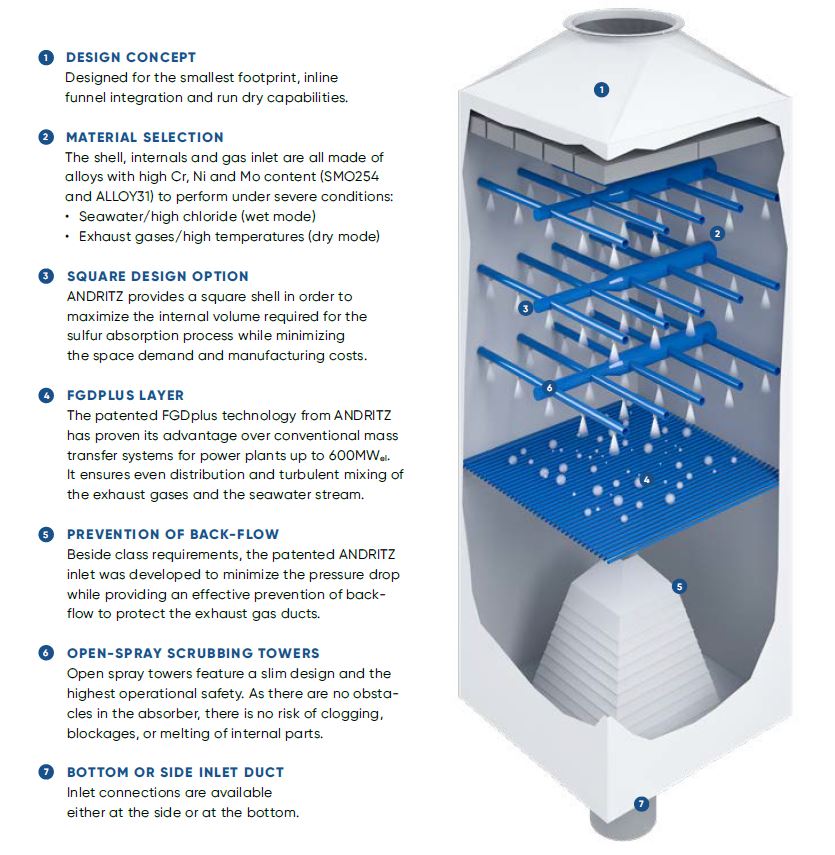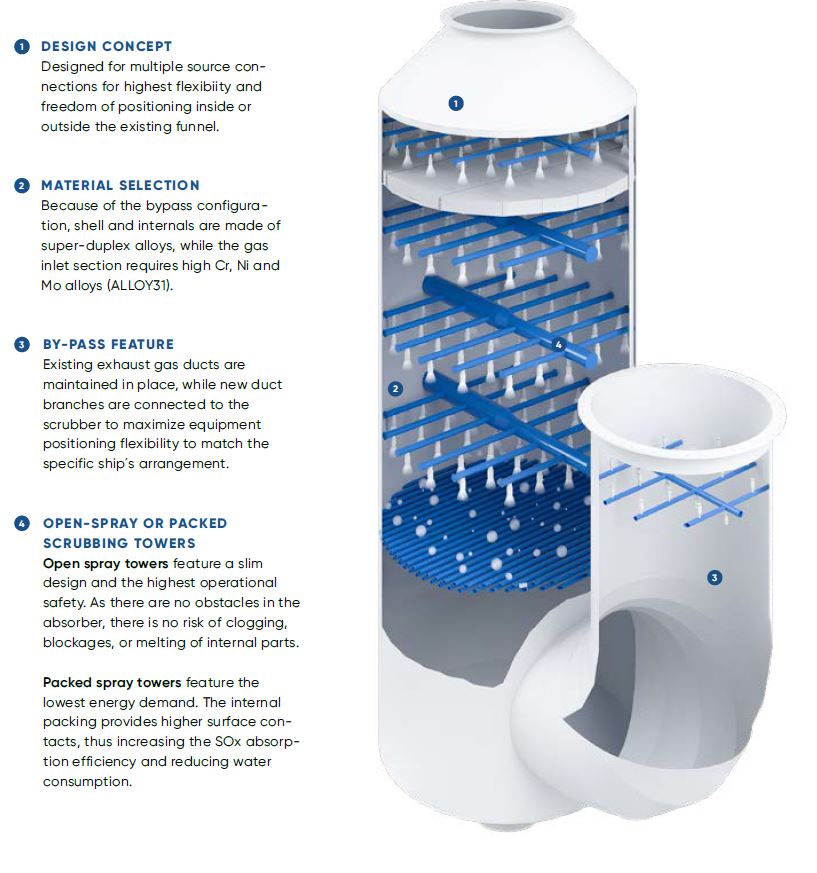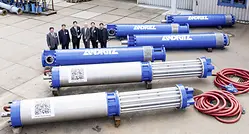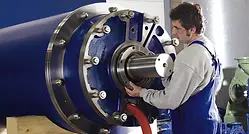OPEN LOOP MODE
In open loop mode, seawater is used as a washing medium to clean the exhaust gas. This simple process makes use of the natural alkalinity of the seawater in chemical absorption of the SOx. For this reason, the washing medium is pumped from sea chests to the absorber, where the absorption process takes place by means of spray scrubbing. The treated exhaust gas can then be released to the environment, and the effluent is also discharged. Both the exhaust gas and the effluent have to meet several critical, environmental constraints, which are validated by continuous emission monitoring.
CLOSED LOOP MODE
If the natural alkalinity is too low or discharging of effluent is not allowed, SOx scrubbing is performed in closed loop mode. In this mode, the washing medium is recycled, and a neutralizing agent (50% wt. NaOH, Na2CO3) is added in metered doses to obtain a certain absorption capacity. In order to control the absorption temperature and maintain the water balance, an inline heat exchanger is provided on request to cool the washing medium down. Consequently, the effluent has to be cleaned periodically depending on the engine load, the ship’s route, and its fuel specification. For this application, a washing water treatment unit is installed to separate the particles and salts from the washing medium, in accordance with the MARPOL Convention, before it is discharged into the sea. The sludge generated is collected in a separate tank, while the treated washing water is either stored in the holding tank or discharged into the sea, depending on local discharging restrictions.
HYBRID MODE
A combination of open and closed loop operations is called hybrid mode. In hybrid mode, it is possible to switch between these two processes depending on the predominant basic conditions (seawater alkalinity, discharge restrictions, etc.). This option provides high flexibility and enables customers to choose the best process, both economically and technically.















